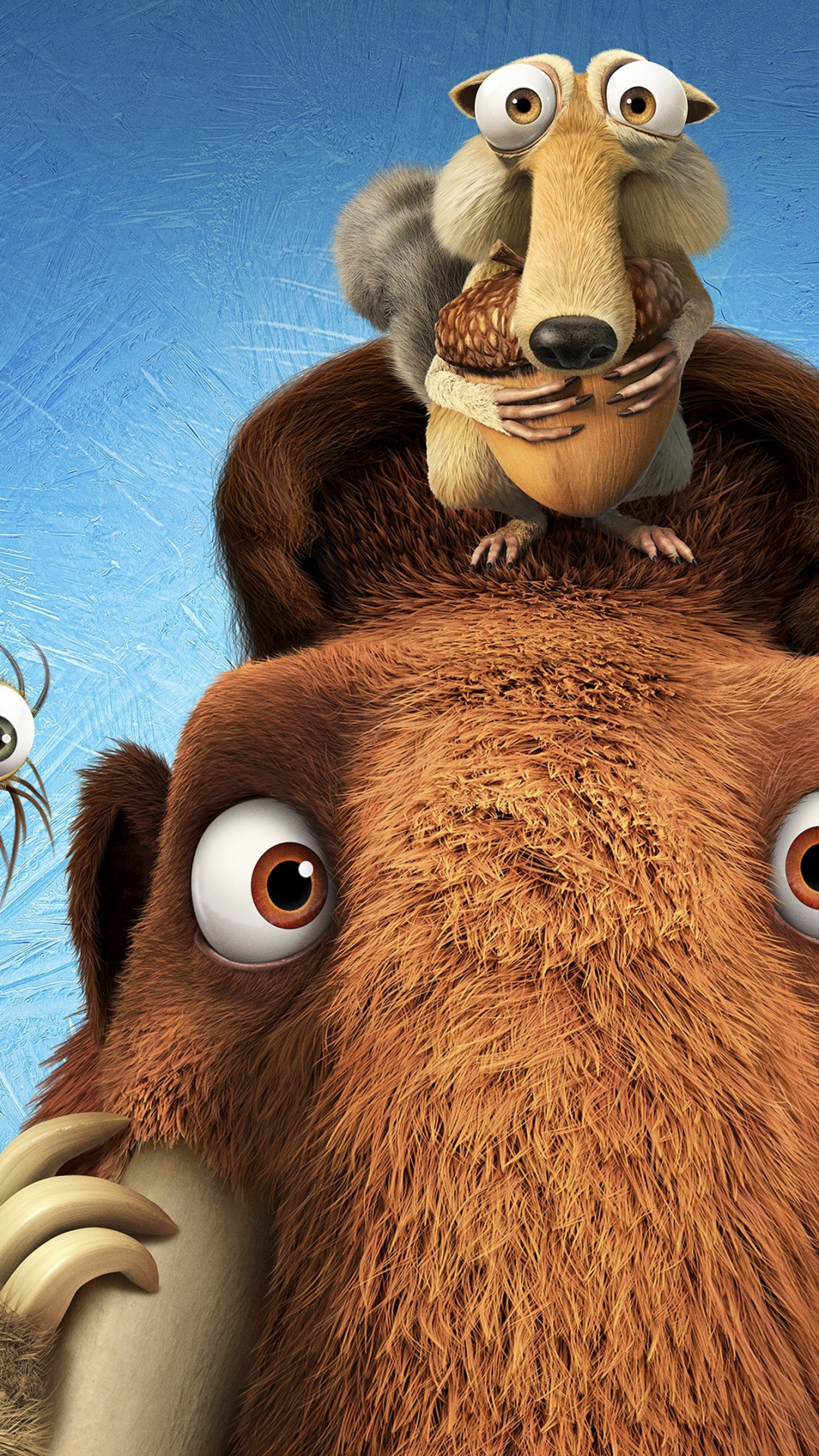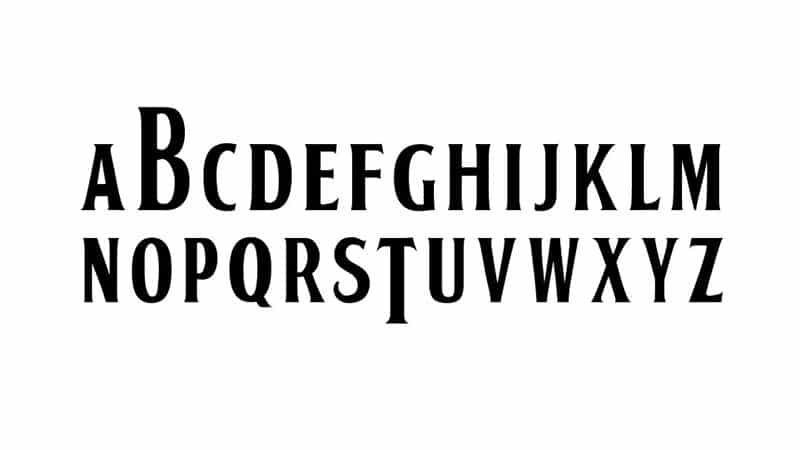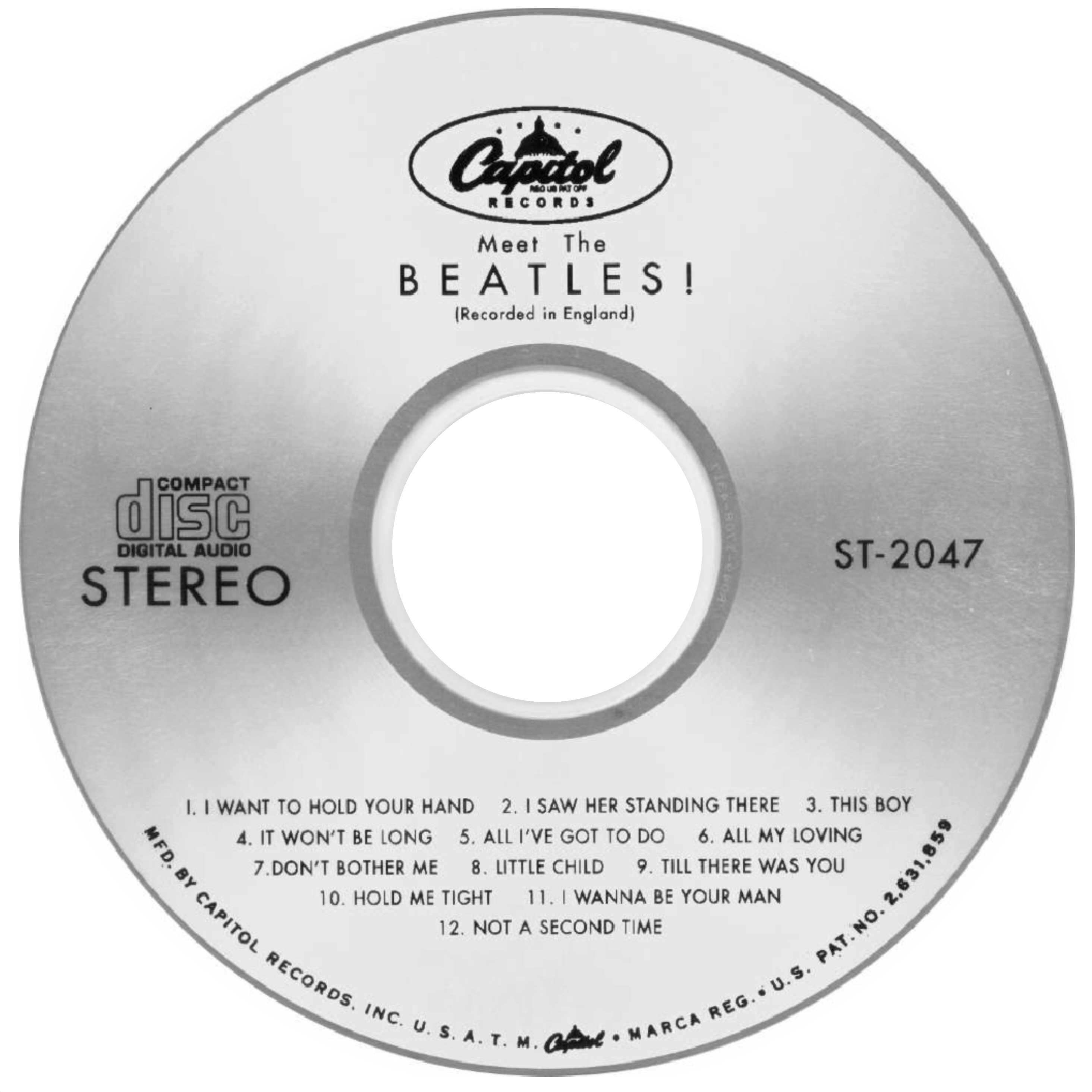The First Beatles album released in the United States was not Meet The Beatles, but rather Introducing The Beatles, which was released on January 10, 1964. Introducing The Beatle s was prepared for release by Vee Jay Records in July 1963 but not actually issued at that time. Download » Meet the Beatles A uniquely firsthand introduction to the Beatles as they were in 1963, Meet the Beatles includes features on the band’s background, their life in Liverpool, and a photographic record of a day in the life of the Beatles. In some cases, reverb was added to the tracks to make them sound more “American.” This album is packaged in a miniature vinyl sleeve that faithfully recreates the original U.S. LP release down to the finest detail, including the inner sleeve. MEET THE BEATLES was originally released January 10, 1964 in the U.S. It spent 11 weeks at No.
| Meet the Beatles! | ||||
|---|---|---|---|---|
| Studio album by | ||||
| Released | 20 January 1964 | |||
| Recorded | 11 February – 23 October 1963 | |||
| Studio | EMI, London | |||
| Genre | Rock and roll[1] | |||
| Length | 26:43 | |||
| Language | English | |||
| Label | Capitol | |||
| Producer | George Martin | |||
| The BeatlesNorth American chronology | ||||
| ||||
| The Beatles United States chronology | ||||
| ||||
| Singles from Meet the Beatles! | ||||
| ||||
Meet the Beatles! is a studio album by the English rock band the Beatles, released as their second album in the United States. It was the group's first American album to be issued by Capitol Records, on 20 January 1964 in both mono and stereo formats. It topped the popular album chart on 15 February 1964 and remained at number one for eleven weeks before being replaced by The Beatles' Second Album. The cover featured Robert Freeman's iconic portrait of the Beatles used in the United Kingdom for With the Beatles, with a blue tint added to the original stark black-and-white photograph.
Background[edit]

After constantly rejecting requests by both Brian Epstein and George Martin to release Beatles records in the United States, in November 1963 EMI label head Sir Joseph Lockwood sent a deputy to Los Angeles ordering EMI's subsidiary, Capitol Records to commence promoting and releasing Beatles records in the United States. Despite the 'first album' claim on its cover, ten days prior to its release, Vee-Jay Records of Chicago beat Capitol to the punch with the release of the Beatles' American debut album Introducing... The Beatles, which had been delayed for release for various reasons since the previous summer. Perhaps as a result of the Vee-Jay release, Liberty Music Shops advertised in the New York Times of 12 January 1964 that Meet the Beatles! was available for purchase, an ad not authorised by Capitol.[2]
In 2003, Meet the Beatles! was ranked number 59 on Rolling Stone magazine's list of the 500 greatest albums of all time,[3] and 53 in a 2012 revised list.[4] In 2004, the album was released for the first time on compact disc in both stereo and mono as part of The Capitol Albums, Volume 1box set, containing the original US stereo and mono mixes. In 2014, Meet the Beatles! was issued on CD again, individually and included in the Beatles boxed set The U.S. Albums, wherein although following the running order for Meet the Beatles!, contained the UK mono and stereo mixes.
Music[edit]
By November 1963, the Beatles had already recorded over 35 songs for EMI's UK Parlophone label, while Capitol Records in the US planned to release an album and a single, and more at a later date. The US rights to the Beatles first 14 tracks were held by Vee Jay Records along with a few others. 'She Loves You' had been issued in America on the Swan label and also sold poorly. In Britain, Parlophone was already releasing their second Beatles album With the Beatles and had issued several singles which were not included on any UK albums with the exception of the first two ('Please Please Me'/'Ask Me Why' and 'Love Me Do'/'PS I Love You'). While the Beatles' first two British albums each contained 14 tracks, in the American market albums were typically limited to 12 tracks and it was expected for albums to include the current hit single.
The first three tracks on the album include the December 1963 Capitol single 'I Want to Hold Your Hand' along with the record's B-sides both in the United States, 'I Saw Her Standing There,' and in the UK with 'This Boy' from the original November 1963 release. Neither 'I Want to Hold Your Hand' nor 'This Boy' had appeared on album at the time in the UK, while 'I Saw Her Standing There' had been the lead-off track to the band's debut album. The other nine tracks on Meet the Beatles! are duplicated from its nearest UK counterpart album With the Beatles. Those were Beatles original songs and not cover versions of songs done by other artists with exception of 'Till There Was You'. The remaining five tracks from With the Beatles were songs originally recorded by other artists. Capitol determined that for their first album they would only include original and fresh material. There was fear that the remakes would turn Americans off of the Beatles. The other five songs would appear on Capitol's next American LP, The Beatles' Second Album, released in April 1964.[5] The songs 'I Want to Hold Your Hand' and 'This Boy' are in a duophonic [fake] stereo, as Capitol had not been provided proper stereo mixes.
Critical reception[edit]
| Review scores | |
|---|---|
| Source | Rating |
| AllMusic | [6] |
| The Rolling Stone Record Guide | [7] |
The album was included in Robert Christgau's 'Basic Record Library' of 1950s and 1960s recordings, published in Christgau's Record Guide: Rock Albums of the Seventies (1981).[8]
Commercial performance[edit]
In the U.S., the album debuted at No. 92 on the album chart for the week ending February 1, 1964. Two weeks later, it peaked at #1 where it remained eleven consecutive weeks, eventually replaced by The Beatles' Second Album. It sold 4,045,174 copies by December 31, 1964, and 4,699,348 copies by the end of the decade.[9] It was certified Gold by the RIAA on 3 February 1964, and 5× Platinum on 26 December 1991.[10]
Track listing[edit]
All tracks written by John Lennon and Paul McCartney, except where noted.


| No. | Title | Lead vocals | Length |
|---|---|---|---|
| 1. | 'I Want to Hold Your Hand' | Lennon and McCartney | 2:24 |
| 2. | 'I Saw Her Standing There' | McCartney | 2:50 |
| 3. | 'This Boy' | Lennon, McCartney, and Harrison | 2:11 |
| 4. | 'It Won't Be Long' | Lennon with McCartney | 2:11 |
| 5. | 'All I've Got to Do' | Lennon | 2:05 |
| 6. | 'All My Loving' | McCartney | 2:04 |
| Total length: | 13:45 | ||
| No. | Title | Lead vocals | Length |
|---|---|---|---|
| 1. | 'Don't Bother Me' (George Harrison) | Harrison | 2:28 |
| 2. | 'Little Child' | Lennon | 1:46 |
| 3. | 'Till There Was You' (Meredith Willson) | McCartney | 2:12 |
| 4. | 'Hold Me Tight' | McCartney | 2:30 |
| 5. | 'I Wanna Be Your Man' | Starr | 1:59 |
| 6. | 'Not a Second Time' | Lennon | 2:03 |
| Total length: | 12:58 | ||
Personnel[edit]

The Beatles
- John Lennon – vocals, rhythm guitar, harmonica, acoustic guitar, tambourine on 'Don't Bother Me'
- Paul McCartney – vocals, bass guitar, piano on 'Little Child', claves on 'Don't Bother Me'
- George Harrison – backing vocals, lead guitar, acoustic guitar, lead vocals on 'Don't Bother Me'
- Ringo Starr – drums, percussion, lead vocals on 'I Wanna Be Your Man'
Production
- George Martin – producer, piano on 'Not a Second Time', Hammond organon 'I Wanna Be Your Man'
Charts and certifications[edit]
Chart performance[edit]
| Certifications[edit]
| ||||||||||||||||||
Notes[edit]
- ^'Meet the Beatles! - The Beatles - Songs, Reviews, Credits - AllMusic'. AllMusic. Retrieved 13 April 2018.
- ^Spizer 2000, p. 4.
- ^Rolling Stone 2003.
- ^'500 Greatest Albums of All Time Rolling Stone's definitive list of the 500 greatest albums of all time'. Rolling Stone. 2012. Retrieved 23 September 2019.
- ^Spizer 2000, p. 5.
- ^Meet the Beatles! at AllMusic
- ^Marsh, Dave; Swenson, John (Editors). The Rolling Stone Record Guide, 1st edition, Random House/Rolling Stone Press, 1979, p. 26.
- ^Christgau, Robert (1981). 'A Basic Record Library: The Fifties and Sixties'. Christgau's Record Guide: Rock Albums of the Seventies. Ticknor & Fields. ISBN0899190251. Retrieved 16 March 2019 – via robertchristgau.com.
- ^'How Many Records did the Beatles actually sell?'. Deconstructing Pop Culture by David Kronemyer. 29 April 2009. Archived from the original on 6 March 2016. Retrieved 11 July 2015.
- ^ ab'American album certifications – The Beatles – Meet The Beatles!'. Recording Industry Association of America. Retrieved 15 September 2013.If necessary, click Advanced, then click Format, then select Album, then click SEARCH.
- ^Whitburn 2010, p. 63 harvnb error: no target: CITEREFWhitburn2010 (help).
- ^'Canadian album certifications – The Beatles – Meet The Beatles'. Music Canada. Retrieved 15 September 2013.
Meet The Beatles Free Download
References[edit]
- 'The RS 500 Greatest Albums of All Time'. Rolling Stone. 18 November 2003. Retrieved 13 November 2009.
- Spizer, Bruce (2000). The Beatles' Story on Capitol Records, Part Two: The Albums. New Orleans, Louisiana: 498 Productions. ISBN0-9662649-2-4.CS1 maint: ref=harv (link)
External links[edit]
| Wikiquote has quotations related to: Meet the Beatles! |
- Bruce Spizer's The Beatles' Story on Capitol Records, Part One: Beatlemania and the Singles website
- Bruce Spizer's The Beatles' Story on Capitol Records, Part Two: The Albums website

Meet The Beatles Full Album Download
Biography
The Beatles are one the most influential rock bands in the history of music. The glorious story of this ensemble started in 1956 when John Lennon and Paul McCartney began their joint concert activity in Liverpool. Later, they were joined by George Harrison. The forth member of the band they formed was Peter Best. However, in 1962 he was replaced by Ringo Starr. In the beginning, they were not different from scores of other Liverpool bands performing at pubs and small venues. The music they played first was a blend of rock-n-roll and simplified jazz. The Beatles tasted popularity first in Germany. They moved in Hamburg in 1960 and became the main performers at one of the local clubs. In 1961, the band found a new manager. It was Brian Epstein, a music store owner, who worked with them up to his dying day in 1967. He changed their image substituting leather coats with expensive strict suits. Their debut album, Please Please Me (1963) featured three smashing hits and immediately made the musicians new national heroes. After their participation in a row of American TV shows along with the film A Hard Day’s Night with their own soundtrack, The Beatles turned into international superstars. Paul and John were the leading creative power of the band. These two worked hard enough to produce two or three monumental albums per year, apart from multitudes of worthy records left unreleased.
In 1967, The Beatles released Sergeant Pepper's Lonely Hearts Club Band, their first conceptual rock album. Its idea was description of a person’s life and troubles in the urbanized society. The Beatles utilized a number of novelties, including electronic noises and exotic instruments along with proficient arrangements and brilliant melodies. This work became a foundation for the development of art-, hard- and psychedelic rock. They managed to create a prevailing feel of rhythm on each song making it emotional and powerful. This album consolidated the band’s unique approach and leading position in the music world. As their music became more complicated in terms of execution, instruments and lyrics, the audience grew bigger and more diverse. The most notable songs of that period were Michelle, Yesterday, Eleanor Rigby, Help!, Nowhere Man, A Day in the Life, Norwegian Wood, Lucy in the Sky with Diamonds, Yellow Submarine, Penny Lane, Strawberry Fields, The Fool on the Hill, Hey Jude.
Two of The Beatles, Paul McCartney and John Lennon, also had their own projects. Lennon wrote the books In His Own Write, (1964), and A Spaniard In the Works, (1965), collections of poems and prose with sophisticated images and ideas. McCartney wrote the soundtrack to The Family Way (1967). The Beatles released their last album, Let It Be, in 1970. The same year the band collapsed mostly due to the disputes between John and Paul. Each of the musicians continued music career working on solo projects. Lennon produced several albums in cooperation with his wife Yoko Ono. John was shot in the back by one of his own fans in New York. The other three Beatles reunited in 1995 to recordThe Beatles Anthology, a double disc compilation of unreleased songs and live versions of hits. The most notable song was the new composition Free as a Bird. It was made on the basis of Lennon’s old record with the later addition of some instruments and vocals performed by the other members. In a year, they released another double disc collection of hits with one more new song Real Love, also restored from Lennon’s archive. In 2001, one more member of the legendary quartet, George Harrison, passed away.
In 2009, fans of the celebrated band were happy to get the opportunity to buy The Beatles’ classic albums in a shape of remastered editions.
Studio Albums
Compilation albums
Lives
Remixes
Love
Soundtracks
